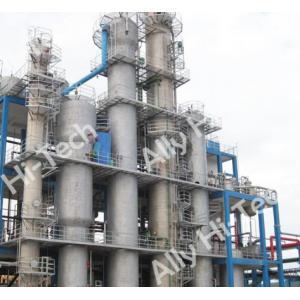

Add to Cart
Economic Hydrogen Peroxide Production Plant 35% 50% Product Concentration
General
Hydrogen peroxide is an environmentally friendly product. Its
production adopts anthraquinone palladium catalyst fixed bed
hydrogenation process, including the following parts:
hydrogenation, oxidation, extraction and purification,
post-treatment, supplementation and concentration.
In the presence of palladium catalyst, alkylanthraquinone dissolved
in organic solvent is hydrogenated to form alkylanthrone
hydroquinone, which is finally oxidized to hydrogen peroxide under
given reaction conditions. At the same time, alkyl anthraquinone
hydroquinone is converted to alkyl anthraquinone, and the working
liquid stream contains H2O2. The resulting working liquid stream is
sent to the extraction column, where desalinated water is used as
the extractant for countercurrent extraction to produce H2O2, which
is purified to form the finished product H2O2, which is sent to the
storage tank. The treated alkylanthraquinone solution is returned
to the hydrogenation section for repeated use.
Process Schematic
Features
Performance
| No. | Item | Value | Remark |
| 1 | Product Concentration | 35%, 50% | |
| 2 | Hydrogen Consumption | 240 Nm3/ton-H2O2 (35%) | |
| 3 | Air Consumption | 1,600 Nm3/ton-H2O2(35%) | |
| 4 | 2-EAQ Consumption | 0.76 kg Nm3/ton-H2O2 | |
| 5 | Electricity Consumption | kW/h-ton-H2O2 | |
| 6 | Capacity | 5,000 ~ 100,000 MPTA |
Application
Hydrogen peroxide is a kind of environment-conscious product, and it is mainly used in three fields, say, bleaching, chemical synthesis, and environmental protection. Moreover, it is widely used in fields of medical, war industry, chemicals synthesis, textile, paper making, environmental protection, food, metallurgy and agriculture etc.
Our Company
